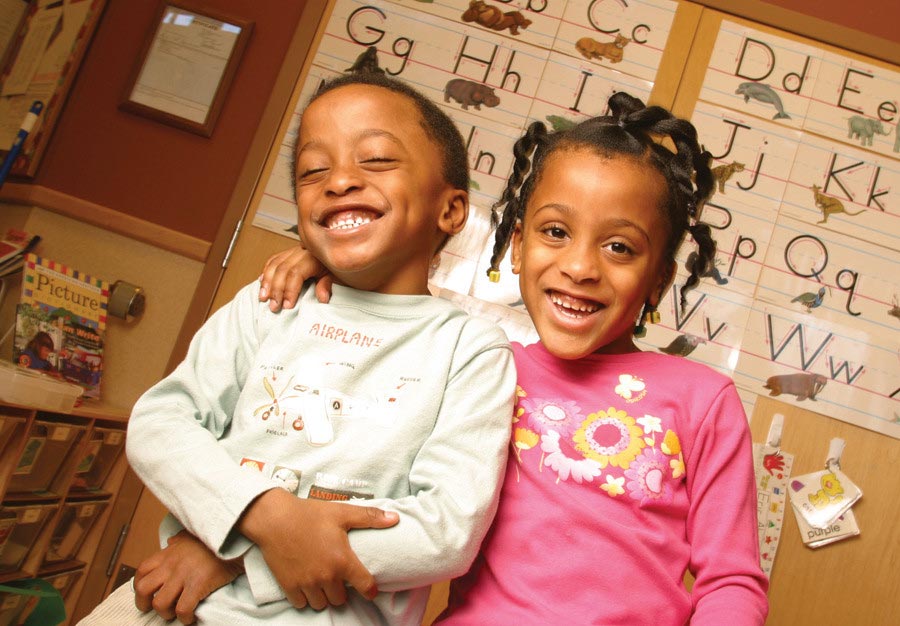Just when you were feeling comfortable with your childs teachers in the infant care program, you find out it is time to think about moving up to toddler care. Toddlers transition at various ages in different child care centers and states depending on a variety of factors including local regulations, space availability, and the childs developmental readiness. Whenever this transition happens, it may feel as stressful to us, as parents, as it might to our children.
Parents can get as attached to their infants caregivers as their babies can. As parents, its comforting when the teachers know our baby, his routine, and what makes her happy. While in the infant program, we built a trust with the caregiver and found ways to work together to best jointly care for our child. We may wonder, "Could the toddler teachers possibly care as much? How will they come to know my child when the room seems so busy?" Here are some tips that may help you ease transitions into toddler care.
Tips for Transitioning into Toddler Care
- Meet and greet with teachers. Ask to meet your toddlers new teachers to help build healthy parent-teacher relationships and to see the classroom ahead of time. Request a conference to talk about your child and his needs and skills. Share how you like to receive classroom communication (verbally, on a daily sheet, phone call, email, etc.) and what level of detail is important to you.
- Request a gradual transition into toddler care. Whenever possible, it is better if your toddler can gradually ease into her new room. That said, it is important to follow your childs lead. Some children have trouble going back and forth and the program should be flexible enough to adjust as needed.
- Give you and your child time to adjust. It is important to give yourself and your child a chance to get comfortable with the toddler classroom and to bond with the new teachers. This process wont always happen instantly. In some cases, we almost need to "grieve" leaving the relationship that was developed with the infant staff. As everyone has their own unique personality, you will probably find that the toddler teacher may do things a little differently than your childs infant caregiver. Understand that this is part of the transition process of leaving one caregiver and moving on to another. Give time for the new relationship to develop among you, your child and the new caregiver as you all adjust to a different style.
What to Expect in the Toddler Classroom
We often think of infant rooms with soft music and lighting, sleeping babies, and babies on their tummies on mats reaching for toys. Toddler classrooms, in contrast, have the reputation of being bustling and busy with children trying out their newly acquired skills of walking, climbing, and saying "no." Knowing what to expect in the toddler classroom can help ease the transition.
- In many toddler care programs, the individualized care you came to expect in the infant room will continue in the toddler classroom. The ratios of adults to children and the group size, however, may be larger in the toddler room especially as children become a little more independent and learn to do more for themselves.
- In most toddler care programs, teachers design learning experiences that promote childrens blossoming independence and social skills. During your visit, take time to ask toddler teachers about the curriculum and to view recent projects done.
- Some physical changes may accompany your childs transition to the toddler room. She may move from a crib to a cot or mat, for example. While your child may not have yet moved from a crib to a bed at home, many families find that their toddler does very well with this transition at the child care center and that this change eases the change at home from crib to bed. Depending on your childs center, the transition may also mean less reliance on bottles, more use of cups, and less use of pacifiers. These are good topics to discuss with your childs new teacher prior to the transition to toddler care.
- A challenge in toddler rooms is that non-verbal toddlers sometimes use physical means (such as biting or pushing) as strategies to communicate wants and frustrations. Talk to your childs new teachers about toddler aggression before it happens. How is it handled? What do they do to try to prevent it? How will you be notified if your child is bitten? How can you and the teacher work in partnership to help your toddler learn positive ways to communicate? What is the policy when biting becomes a problem?
- You may receive more notices of bumps and bruises. That is typically due to toddlers trying out their new movement skills as teachers help children safely explore their world and getting a few bumps in the normal process of development rather than a lack of supervision.
As with many transitions, the more communication you can have with your childs new teachers prior to the transition to toddler care, the better. And acknowledge the milestone of "moving up" by taking photos of your childs first day in the new classroom and creating a new morning routine which you carry with you through your childs toddler years.
- The first day of child care is a big step for both parents and kids. Find parenting tips for preparing you and your child to make the transition easier.
- How do you cope with toddler temper tantrums? Get and share advice on our parenting blog.
- Get tips for helping children cope when teachers leave or children transition away from caregivers into new classrooms.
- Tips for transitioning from grandparent care into an early education program.
- Being a toddler teacher can be tedious and tiresome work. Read our mom bloggers special thank you to toddler teachers everywhere.
- Our mom blogger shares 7 toddler behaviors she adores and a few toddler behaviors that drive her crazy.





